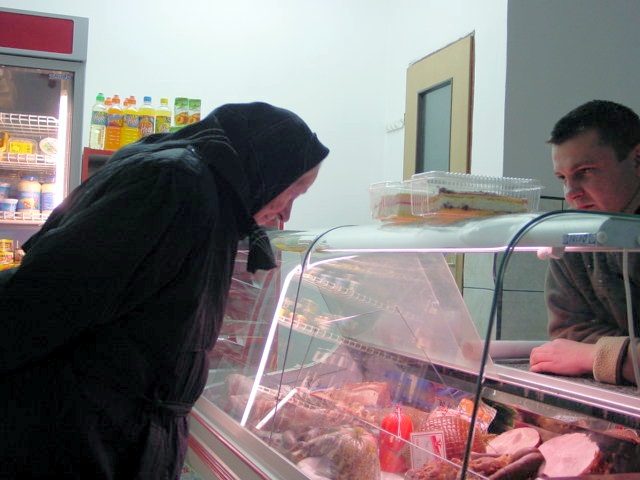Of the many things I have to teach my students, one of the most difficult is the art of inference. When we read, we infer, but I try to show students that we infer constantly: about people’s body language, about who’s walking behind us, about the mood of our mothers and fathers — simply everything. But as we begin working with it at a visual level, inferring from photographs, I find that students often think an inference is merely an observation. In other words, they look at a situation, make a generalization about it, and think they’re merely reciting facts.
For example, take a look at the picture below.

It’s tempting to say that one observation is simple: this is in a store. After all, there’s plenty to indicate that:
- in the foreground there’s a display case with meat;
- in the background there’s what looks like a refrigerator display case; and
- there are people who appear to be client and salesman.
However, the very verbage of the description belies the fact that it’s not an observation (after all, I used the term “indicate”) but instead an inference. It might be an inference with a very high degree of probability, but an inference it is.
I think that this might be a source of political friction between the liberals and conservatives. They’re both making inferences that they assume to be mere observations, and when the other side calls them on it, the discussion often slides into ad hominem arguments. Anyone who can’t see the obvious inference — which to the speaker is just an observation — is an idiot. After all, it’s as simple as seeing that the woman in the picture above is clearly shopping for Christmas dinner.
0 Comments